Flood protection: What building owners need to know to protect their properties
This course examines numerous flood protection approaches and building owner needs before delving into the flood protection process.
Historically, flooding is one of the costliest natural disasters in the United States on an annual basis. Flood Insurance Rate Maps (FIRMs) attempt to address area-wide flood risks retroactively and may not reflect increased rainfall intensities or localized street flooding that now occur more frequently.
Proactive owners/operators should understand flood risks from both flood frequency and flood water elevation perspectives. Local flooding in the parking lot cannot be compared to the deluge from a hurricane flooding your building, but the parking lot flooding could still be disruptive. For example, regular high-intensity rain events that enter a building or garage can be disruptive as well as costly. Whether the impacts are frequent or infrequent, flooding can have significant impacts due to lost revenue and operations, costs of repairs, and loss of patronage.
This begs: When can a reasonable and proactive investment in flood protection significantly reduce flood recovery costs?
This course examines numerous flood protection approaches and owner needs before delving into the flood protection process. Determining the flood resilience of a property can provide a good understanding of risk associated costs.
WHAT IS RESILIENCE?
Using the word resilience as the basis of this discussion signifies that the ability of a property to absorb flood damages can play a significant part in determining how best to approach flood mitigation. The American Institute of Architects (AIA) defines resilience as the “ability to prepare and plan for, absorb, recover from, and more successfully adapt to adverse events.”
Taking that into consideration, a key question is whether or not the cost of recovery is less impactful than the cost of the investment to protect against a potential flood. The costs are not only the cost of installation, but the cost of maintenance, the cost of inconvenience of the system, and the ability to implement the system when needed.
FLOOD PROTECTION
Flood protection is intended to reduce the risk for loss of life and property by lessening the impact of flood disasters, according to the Federal Emergency Management Agency (FEMA). Effective flood protection requires understanding the broad and localized watershed issues and associated risks that impact a property, and an understanding of the community wide protection systems related to the specific property.
Flood protection design requires specialized skills: a small mistake can have disastrous consequences. The design needs to be well thought out to address the various features that the design must incorporate, consider the requirements for implementation, and detail what is required to keep the system operational and maintained.
As you would expect, the best design, built perfectly, will be useless if not properly deployed, and a well deployed system that does not consider all the points of exposure can negate the investment on protection.
Proper flood protection design requires:
- Specialized skills
- Attention to detail
- Consideration of implementation, operations, and maintenance
- Easy deployment
- Covering all points of exposure.
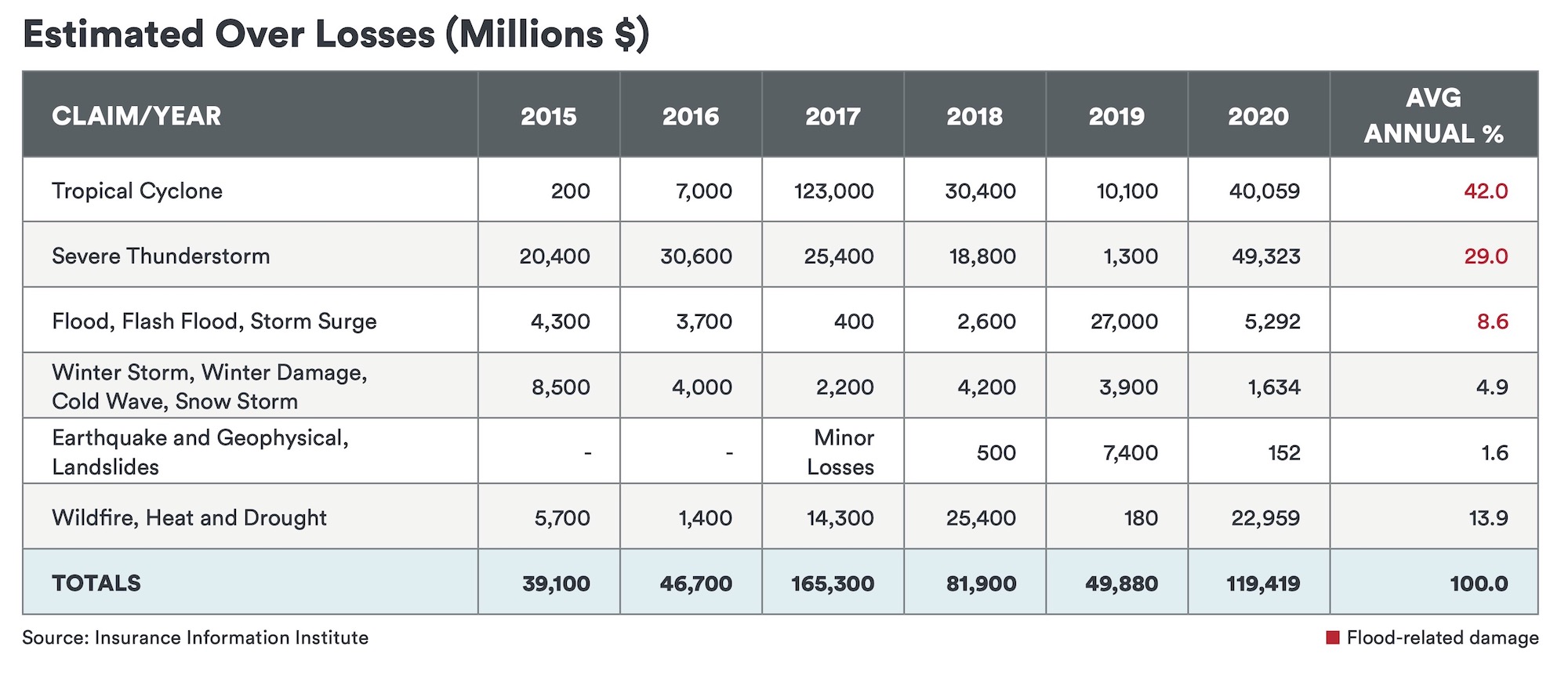
FLOOD PROTECTION APPROACHES
Beginning with the end in mind, the owner should be educated on the potential flood risk and the associated applicable flood protection approaches so they can make an informed decision on what is best for their asset. Once the risk is determined to warrant investment on protection, there are two major approaches to consider, wet and dry flood protection. Furthermore, dry flood protection can be broken down into active versus passive methods.
Consideration of what triggers implementation of an active system is also important. A well documented implementation protocol that is reviewed annually can be just as important as the system itself. The use of early warning systems that are sometimes available to the community can be used as part of this process. A site specific system can be developed at a scale that is applicable to the flood protection system in place if a community based system is not available (see Appendix: Early Warning Flood Forecasting below for additional information).
WET VERSUS DRY FLOOD PROOFING SYSTEMS
FEMA Manual 551, “Selecting Appropriate Mitigation Measures for Floodprone Structures,” defines wet floodproofing as: “Permanent or contingent measures applied to a structure and/or its contents that prevent or provide resistance to damage from flooding by allowing floodwaters to enter the structure.”
In a wet flood proofing system, the structure and contents are designed to get wet by floodwaters.
This is typically less costly than dry floodproofing because the internal and external hydrostatic pressures tend to equalize, lessening the loads on the structural elements such as walls, floors, and columns. The architect and engineers design the structure with intent to flood and, after a brief cleanup, return to normal operations. Where this method is considered, it is important to understand the code and insurance implications and the impact to operations. The materials used should be water resistant and electrical and mechanical systems must be isolated and protected.
The cost of cleanup should be part of the consideration for using this method. The disadvantages to this approach are potential chemical/ sewage contamination cleanup issues and structural damage that can occur if unbalanced loads occur with floodwater inflow or removal, high velocity waterflow, or wave action. Additionally, MEP damages can occur if the systems are not designed for unattended wetting and drying cycles—for example, biological growth in ducts. Isolation of the flooded areas from the rest of the building need to be considered.
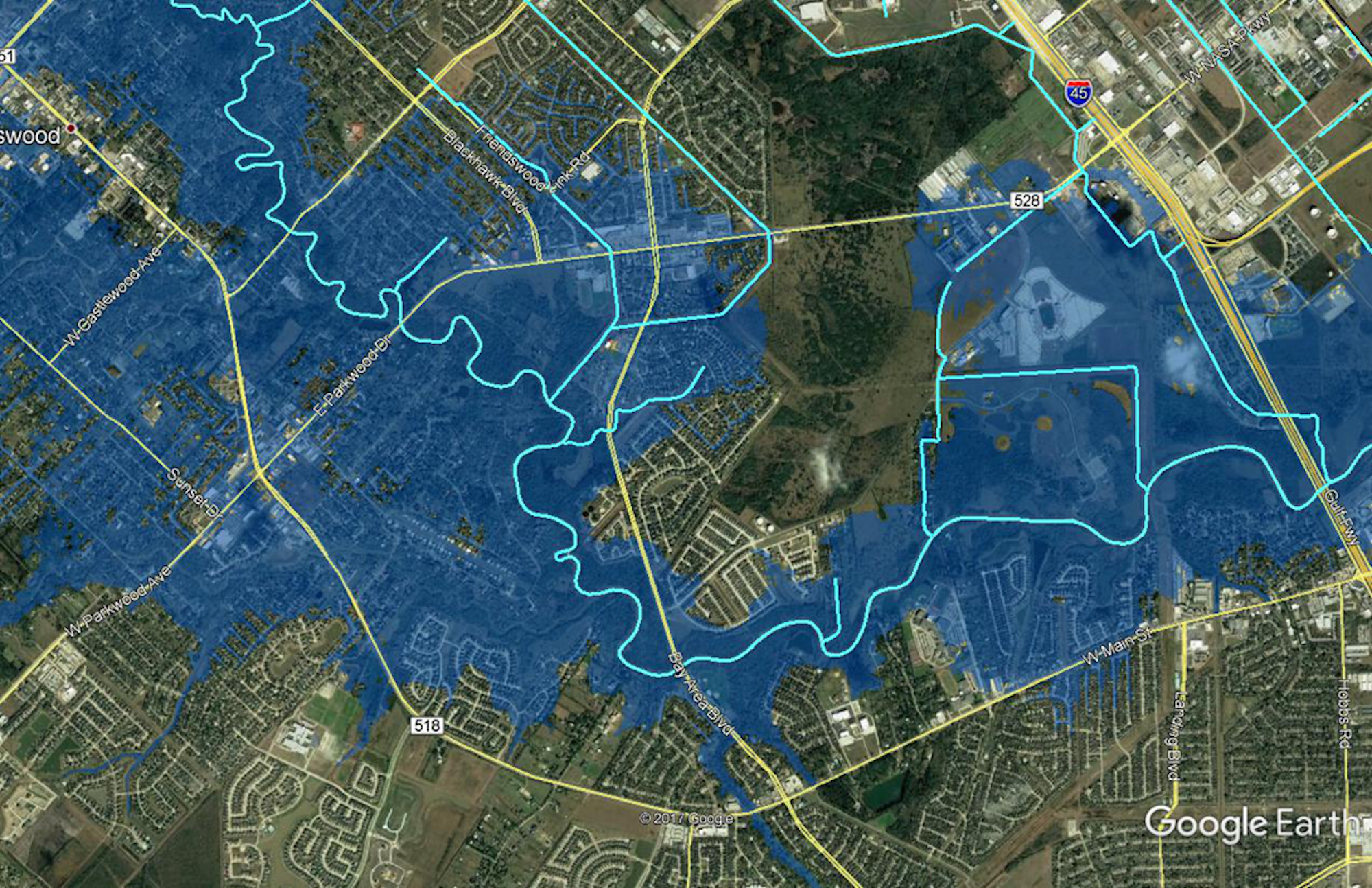
FEMA Manual 551 defines dry floodproofing as: “Measures that eliminate or reduce potential flood damage by keeping floodwaters out of the structure.”
Dry floodproofing is accomplished by either making the structure watertight below its design flood protection elevation, or by building an exterior protective barrier and accommodating rainfall that falls behind the barrier. Dry floodproofing is the more common flood protection application.
ACTIVE VERSUS PASSIVE FLOOD PROTECTION MEASURES
Dry floodproofing can be either an active system, meaning human interaction is required to activate or deploy the system, or a passive system, meaning no human interaction is required to activate or deploy the system. All floodproofing designs will have common measures, whether they are active or passive systems. What makes them active typically is that there is some portion of the system such as a flood door or other operable barrier element that requires someone to secure it.
When a structure can be adequately strengthened to resist the design flood loads, the work can be limited to the existing building footprint and additional impacts to the site may not be required. However, if the structure cannot be adequately strengthened, protection may take the form of an exterior barrier. The exterior barrier requires a way to drain behind the barrier and floodplain mitigation may be necessary to offset lost floodplain storage. The exterior barrier could have a significant impact on the site.
An example of an active system is a system that uses a manually activated flood gate. Gates, doors, vent covers, flood logs, flood panels, and sandbags are some of the active measures typically employed. Any system with elements that have to be activated to seal breaches falls into the active protection category regardless of other passive components. A passive system is one that self-deploys every time it is needed or one that is permanently deployed such as a wall or berm.
RELATED COURSE: 7 game-changing trends in structural engineering
These are typically elements that float up into place as the water rises or are permanent barriers without moving parts that prohibit water intrusion. Mechanical closing systems are available, but are discouraged since the protocol to activate remotely does not typically allow for addressing issues at the enclosure location which is a critical failure in the system. The costs associated with a passive system can be comparable to an active system that requires human activity for deployment, but some of the passive system measures can have consequences that need to be considered and may not work in all situations.
A float up gate is an example of a passive system. The gate is designed so that rising flood water lifts the gate regardless of human interaction. This is the inherent advantage of a passive system—the rising water deploys the system, regardless of the time or who is at the facility, provided it has been properly maintained. These systems can be operated manually as well to take away the potential of an issue at the time of the flood, so they can be managed as active systems, but have the passive action as a backup.
FEASIBILITY STUDY FRAMES SCOPE OPTIONS
Proactive owners address flood risks by assembling a cohesive team that understands the specific flooding concerns of the facility to be protected to deliver a well thought out and properly executed project. The initial phase should be a feasibility study or scoping to set the project parameters. The feasibility study is designed to identify the points of exposure to the facility, determine the optimum protection system that can address all points of exposure, and work through the issues associated with the system including code requirements, agency interface requirements, anticipated costs, impacts to operations, and project schedule. Based on the feasibility study, the decision can be made to proceed with the design phase.
FLOOD PROTECTION PROCESS
The design phase starts with further development of the concept from the feasibility study. The feasibility study identifies relevant inputs such as design flood protection elevation and relevant constraints such as property line setbacks, wetlands, architectural requirements, accessibility, etc., in order to generate potential solutions. After proof of concept, the design phases are schematic design, design development, and construction documents. Throughout this process the budget is tracked and the design elements are vetted with the operations of the facility.
Once the project is sufficiently defined, an early set of drawings can be developed for the Authority Having Jurisdiction (AHJ) to review. The construction documents, typically drawings and specifications, should address comments and concerns from the AHJ, local flood control district, FEMA, and others that may have a vested interest in the project. The next step is bidding, followed by construction, which should include system commissioning, testing, and training on how to operate and maintain the system. The final step is regular maintenance and exercising of the protection system(s). Below is a brief breakout of what each step should include:
1. SCOPING
Choosing the right team is especially important in defining, planning solutions, developing the design, and constructing flood protection/mitigation projects. Because of the different facets of flood protection projects, a strong understanding of potential funding mechanisms, insurance impacts, flood risk... the list goes on and on and each item is important. Choose wisely and make sure that all roles are covered.
After selecting the team members, definition of their roles (prime, support, etc.), the establishment of project communication/direction procedures occur. The first step in scoping is deciding on team member responsibilities and selecting a team leader (see Appendix: Teaming below for additional information). The next step in the scoping process is listening: owner needs, wants, desires, limitations, operational/logistical freedoms, and/or constraints, financial status (non-profit, public, private), etc.; AHJ as well as FEMA and/or state Department of Emergency Management (DEM) expectations, requirements, procedures, prohibitions, etc.; individual design team member’s experience, strengths, weaknesses, creativity, etc.
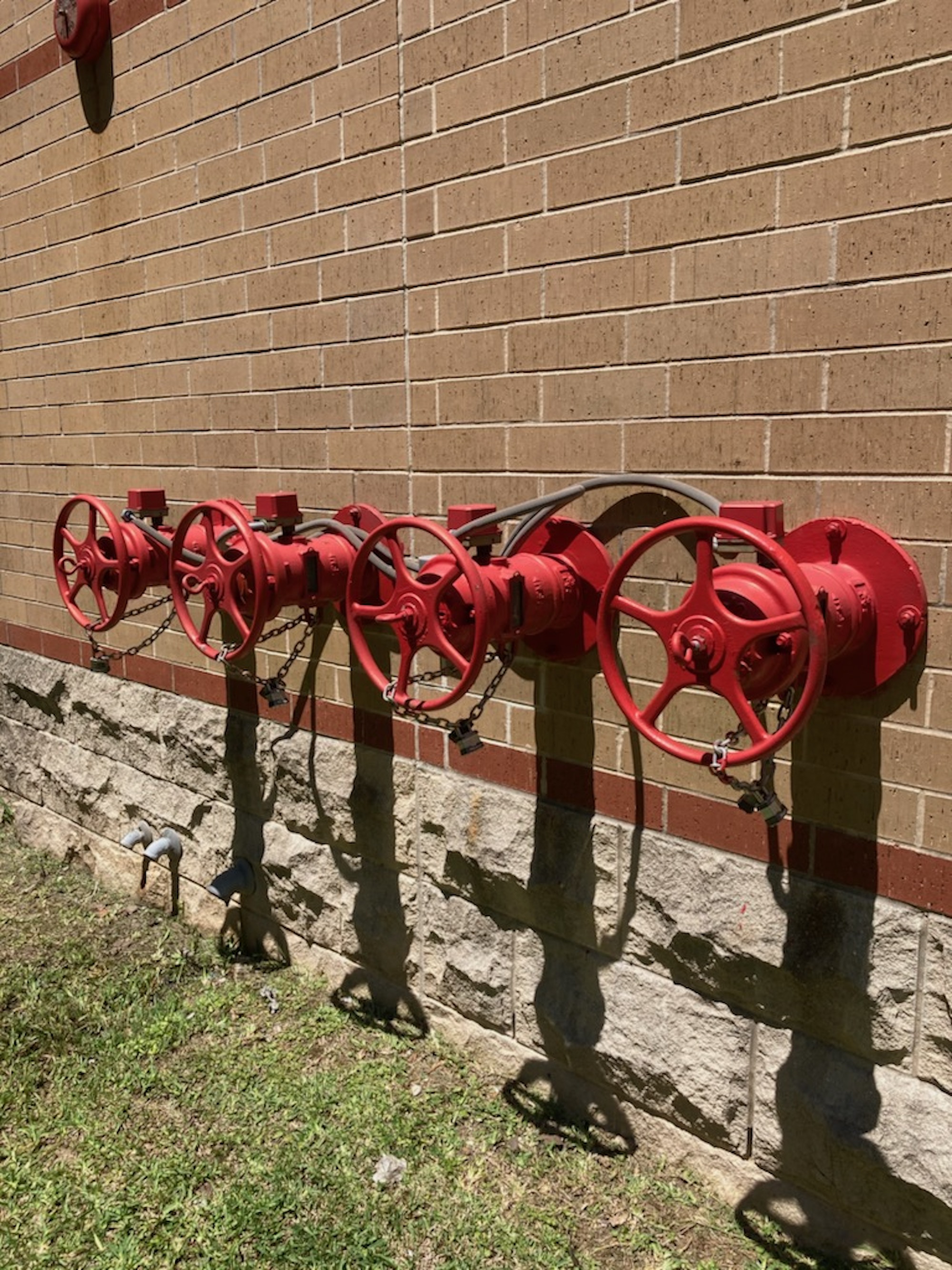
Experience proves that open and frequent communication between all team members (including the owner, as well as bidders and contractor) leads to a better-defined, priced, and executed project. The owner’s risk tolerance to flood damage may be greater or less than the budget tolerance; therefore, it is important to establish expectations early on with respect to protection level(s), budget certainty, schedule, and other project metrics. When walking the site to understand and define the project, it is typically easy to point out many potential vulnerabilities, such as sanitary drains without check valves.
Other vulnerabilities are not so obvious and require various amounts of investigation. For example, whether the electrical conduits enter the building above or below the desired flood protection elevation. Similarly, research is required to determine the design flood elevation as well as what types of protection may or may not be allowed by the AHJ. This must be followed up by determining if the AHJ is open to alternatives based on site history, updated hydrology, future site usage, etc.
Ultimately, flood protection elevation is determined based upon the flood risk—flash flood or floodplain—and owner’s risk tolerance balanced by their budget. The intended ownership duration and/or ownership financial structure—non-profit, public, private—may have a significant impact on project scope and/or budget as well as how the project is procured. Non-profits are typically grant process driven, while public and private institutions typically have a very long-term view and employ comprehensive and durable solutions but use differing financial and procurement methods. An additional question to ask: Is it more important for the flood protection to be invisible or obvious to show the facility is flood protected?
2. ASSESSMENT
The assessment of the facility forms the basis of what is and is not feasible or practical in terms of flood mitigation options with respect to constructability and finances. The assessment needs to determine the appropriate level of flood protection required. This requires retrieving data and information from the owner, FEMA, the municipality/authority having jurisdiction, etc.
Before performing a physical site survey, the civil/ hydraulics and hydrology team must determine both the FEMA 100-year and 500-year flood elevations as well as any local municipality requirements that influence the recommended flood protection elevation. This involves reviewing topographic surveys, as-built drawings, researching the FEMA floodplain models, determining elements that predict flooding, expected water elevation(s), geographic limit(s) of flooding, and interviewing the local facility manager to understand the site’s history of flooding and/or high-water experiences. Understanding the meteorology, the watershed, and the critical zones—often flood elevations for specific locations—helps determine how to provide flood protection.
After determining the appropriate floodplain elevations, the team must perform a site assessment to locate known and potential vulnerabilities at or below these different elevations. This involves looking for above-grade building envelope penetrations such as windows, air intake/exhausts, hose bibs, electrical feeds, as well as below-grade penetrations such as sewer discharge, sump and/or ejector pumps, underground tunnels/connections, etc., to determine the locations of all penetrations/ potential vulnerabilities.
At this point, the owner risk tolerance needs exploring—how high is high enough for flood protection? Local code requirements and site history are obviously important, but the owner budget, schedule, and insurance profile can also influence the desired flood protection elevation (FPE).
After determining the target FPE, the ability of the existing structure to resist the flood waters needs evaluating. This requires record drawings and/or detailed site assessment information if no drawings are available or critical information is missing. This may involve nondestructive or destructive testing and/or explorations of the structure and/or site. The condition of various penetrations, such as hose bibs, require evaluation as do the windows and seals to determine if they have the structural integrity to hold back the desired FPE loads. The assessment must also address building envelope porosity.
Brick masonry construction—even with damp proofing—is typically considered porous while cast-in-place concrete is considered impervious, even without a vapor barrier. Tiltwall/precast construction is most vulnerable at the seals between panels for lower levels of flood loading. Water can also enter the building from below-grade penetrations and joints, especially if the site has sand lenses and high storm- driven ground water issues. At this stage it may be important to know the hydraulic properties of the soil if no geotechnical reports are available.
Typically, the most desired approach is to minimize the amount of new construction, followed by minimizing the amount of strengthening. However, in some instances, a free-standing flood protection system may be more desirable due to schedule, economics, or occupant disruption. Finally, each discipline—architect, civil engineer, MEP engineer, and structural engineer—is now responsible for formulating potential flood mitigation approaches for discussion with the team and owner before moving into design development.
3. DESIGN
The assessment phase discovers all necessary design data, which is then discussed amongst each discipline (team member) to develop multiple feasible flood protection options. After several options are determined, they can be presented to the owner for review. The team’s design members should address redundancy of protection level(s), if any, and other salient owner concerns. The team’s construction contractor should address rough order of magnitude construction costs, durations, disruptions, and potential impacts on facility ingress/egress during construction for the various options. Flood protection design is site specific and is discussed within this paper in broad terms only.
The design team develops flood protection options in accordance with the desired FPE; local, state, and federal codes; and AHJ, DEM, and FEMA requirements. During discussions with the owner, the flood protection options are reviewed, and the desired option is selected for design.
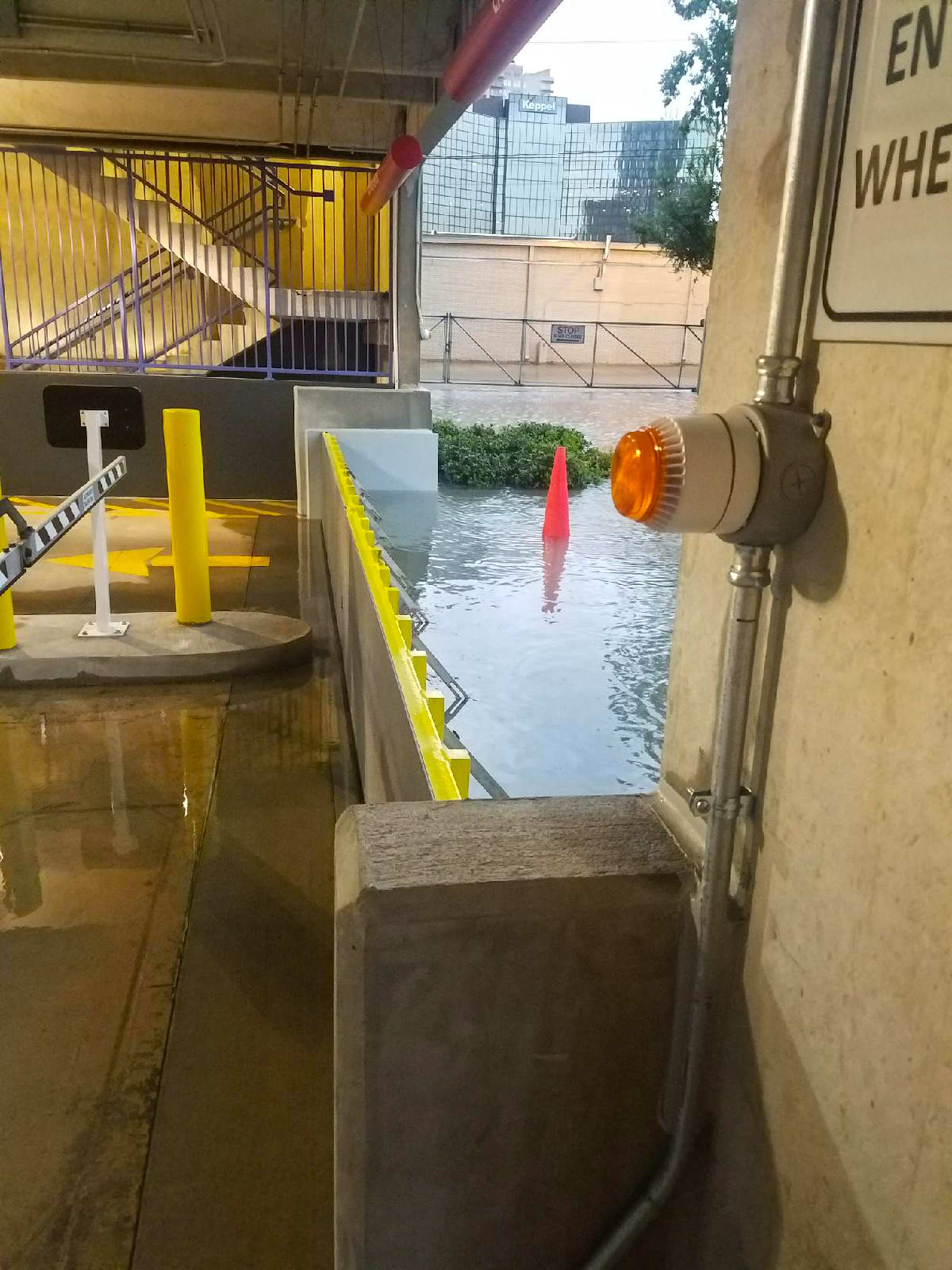
The technical design requires coordination between the entire design team: geotechnical, MEP, civil, and structural engineers as well as architectural and life safety consultants. Other disciplines may be needed, site and constraint dependent. The design team must maintain regular communication with the owner during the design. Various unexpected conditions may arise that could significantly impact the surrounding area as a result of the construction and must be resolved before proceeding to the next design phase. Additionally, regular communication is recommended with manufacturers of flood doors and flood gates. The engineers drive the flood protection system requirements and designs while the architect guides the aesthetic improvements focusing on the appearance of the finished product while maintaining constructability and function.
At this point in time, a construction contractor may develop the initial construction cost estimate and anticipated schedule for construction. The design team works with the contractor in relation to any constructability issues or other areas of potential improvement. Before the drawings are finalized, the owner reviews them for present and future operational compatibility and any other concerns. Upon owner’s approval, the team finalizes the construction documents for permitting.
In some cases, the schedule dictates the need for an early package submittal to allow contractor mobilization. The contractor can then begin rough grading and other utility work prior to the main design package completion. Some items such as flood doors and barriers have long lead times, which must be properly accounted for in the schedule. Commissioning/proof testing of these element installations is strongly encouraged.
4. BIDDING
The bidding is dependent on the procurement requirements of the owner and typically includes solicitation for bids from preferred contractors. The solicitation should require the contractor to provide a list of previous flood protection projects and contacts, allowing the owner to review their prior work and historical performance. A mandatory pre- bid site walk with all potential bidders and providers of significant pre-engineered components, such as flood gates/doors, is strongly encouraged so all parties understand the owner’s intention, constraints, and specific requirements. The design team is often active in the bid tabulation and selection of manufacturers and contractor(s).
5. CONSTRUCTION
Planning for the construction observations and inspections starts during the design phase. Utilizing a standardized design, where possible, with consistent reinforcement bar sizing and spacing or consistent plate thickness aids the contractor during construction and facilitates observations and inspections for the design team. Additionally, drawings typically identify items that require special inspection and testing. The special inspection is performed by an independent testing laboratory/ agency hired directly by the owner. This helps provide the owner with protection from material and construction errors because the testing agency is accountable only to the owner.
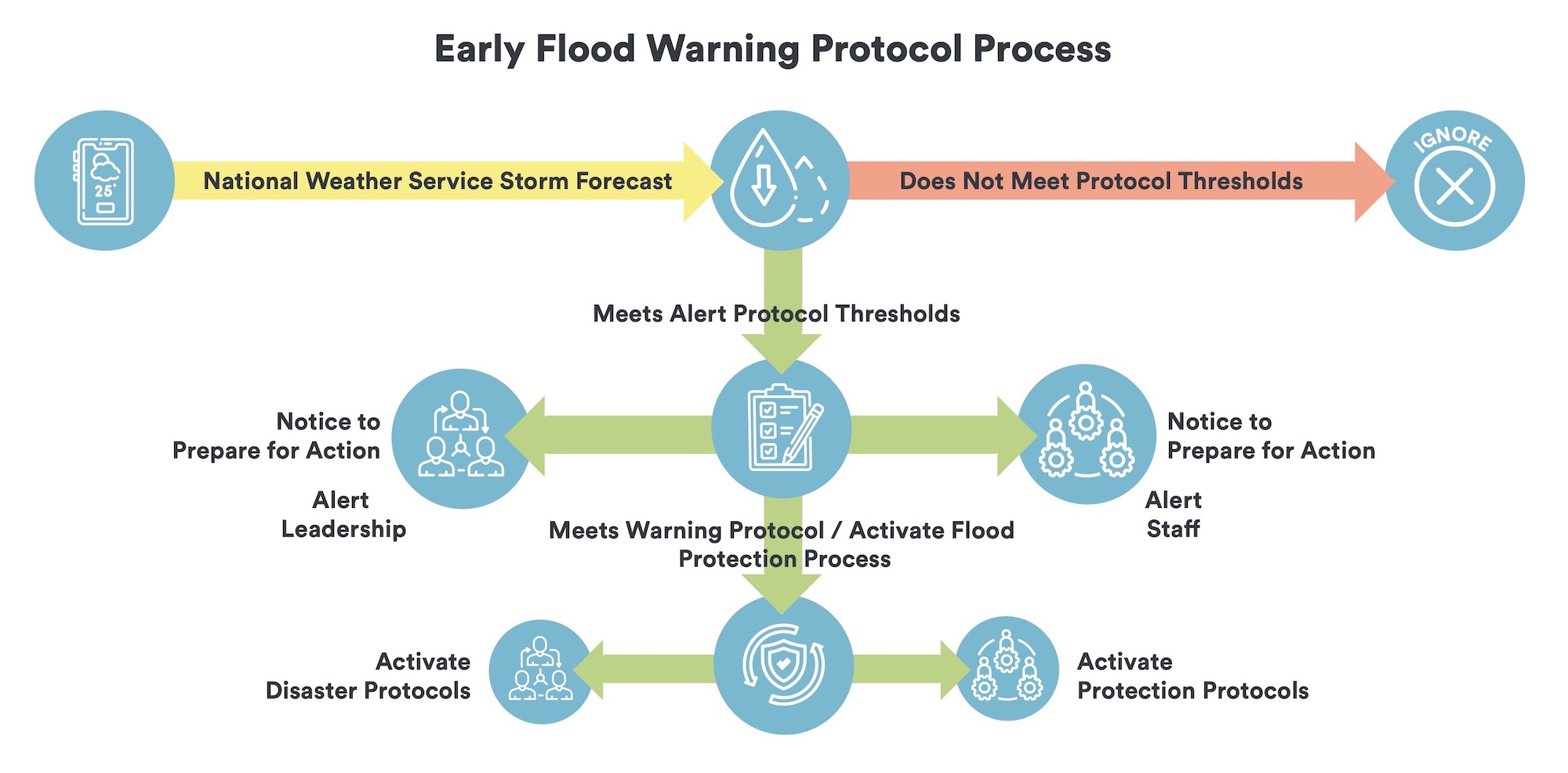
Visits to the project site are required at appropriate intervals for the team to become familiar with the progress and quality of the work and to determine if the work is being performed in a manner indicating that construction, when completed, will be in accordance with the contract documents. At the beginning of the project, site visits are usually on an as needed basis as the contractor is mobilizing and starting the layouts, then as construction becomes more involved, the frequency of site visits increases.
The team must ensure the contractor requests a special visit when problems or concerns occur in order to avoid costly rework later. While on site, take photographs and videos as necessary, and discuss work progress with the contractor/site superintendent. Issue field reports after each site visit to document observations, any construction related issues or changes, and any corrective actions required. These reports document construction progress for the owner and entire project team, including the contractor. Construction documents also specify contractor required submittals. Appropriate action on those construction submittals needs to occur in a timely fashion. Submittals may include shop drawings, project data, test samples, additional information requests, clarification, or interpretation related to the project.
For most flood protection projects, reserve a quarter to a third of the design budget for construction services. Site visits are an integral part of any flood protection project—water will exploit any weakness. In flood mitigation projects, poorly executed joints will leak in the future and may defeat the whole project purpose. The design team needs to be aware of all planned and unplanned construction/cold joints and other barrier penetrations such as MEP lines, to ensure the proper water proofing/detailing occurs. The team needs to educate—and be educated by— the contractor on how the various system components fit together and interact or, potentially, fail to interact.
For example, will the pipe passing through a new flood barrier wall be directly embedded in concrete or will a sleeve and link seal-type fitting be used? Both will work, and have their own advantages and disadvantages, but one may work better with the contractor’s methods and means of construction.
6. MAINTENANCE
After the construction phase, a written protocol for how to operate the flood protection system must be developed with owner’s staff to provide the necessary understanding and documentation for deployment of the system. The documentation serves as a guide to train future staff and is a critical reference before and during a storm event.
The end of construction is the beginning of the flood protection system life. The owner’s staff should train and maintain the system on a semi-annual to quarterly basis. Documentation addressing system maintenance, testing, and operations must be developed by the design team in consultation with the owner staff to establish future protocols and responsibilities.
Appendix: Early Warning Flood Forecasting
The Early Warning Flood Forecasting System reviews real-time rain forecasts from the National Weather Service (NWS) to provide early warning
of approaching storms. The system can be a simple weather alert tied to the NWS alerts or a more complex dynamic model that starts processing the forecast to predict the potential of flooding. The Early Warning Flood Forecasting System is coupled with an action protocol developed using the engineering parameters of the system to document what actions are to be taken when certain predetermined thresholds are met.
The connection to the NWS rain forecast provides dynamic planning capabilities to the owner. Knowing what is currently predicted to result can alter decisions well in advance of the storm. The Early Warning Flood Forecasting system continues to update itself as the NWS updates their rainfall forecasting, allowing the owner to have continuous up-to-date information on future flood risk. This aids in determining which flood protection protocols to activate, modify, or cancel for staff/site safety as new information becomes available.
An important element of any active flood protection system is the linkage of a flood warning system to a documented engineering protocol that stipulates what actions to take when certain flood and rainfall thresholds are met. The flood implementation protocol must be a documented and practiced action plan that takes the guessing out of the system implementation. This allows staff to be prepared and act without waiting for approvals and decisions to be made, eliminating some potential for human error in getting the system in place in time to protect the facilities.
The Early Warning Flood Forecast System development takes into consideration the amount of time needed to implement the flood protection system, the ability to keep areas of important access open for as long as practical, and it also provides the protocol when it is safe to retract the flood protection system. When loss of normal operations can impact effectiveness and critical activities, the Early Warning Flood Forecast System can be a very important part of the flood protection system.
Appendix: Teaming
The flood protection team’s design is for the owner and must meet the owner’s special needs. This requires that the team spend time with the owner to explain what the team knows and what the owner should consider. Every critical team member should be included in discussions so that everyone is on the same page, or understands why positions may differ. A large and diverse group beyond the owner and design team—FEMA consultants, FEMA, DEM, local AHJ, public or private funding entities, and others—must be included so that everyone is able to voice their concerns.
The design team needs to listen to all these parties. It is key for the team to develop an understanding of how the owner operates, what their needs are, and their capabilities/limitations to operate the flood protection improvements. The team does not work in a vacuum. The design involves critical operational considerations. The team must integrate the owner’s staff to gain an understanding of how potential mitigation solutions impact existing operations and costs to ensure that the optimal solution is determined.
The team must also gauge intent and level of risk to determine feasible alternatives. Finally, the team must present alternative solutions to help the owner understand the impacts, then the solution will evolve to address those critical issues by working closely with the owner’s operations. These solutions often require knowledge and action by the owner’s staff.
The level of owner involvement in the design process and how they will interact with the design team needs to be determined during the scoping phase. It is critical to determine if the owner wants to be involved in the day-to-day decisions (active) or only in setting the overall objectives (passive) with the design team presenting potential solutions before refining the desired option. Also, does the owner have a FEMA, DEM, or other funding agency consultant that needs to be included in the decision process, so the design team is aware of the financial and/or regulatory reviews/issues?
The next important scoping decision is who will lead the project. Frequently the civil/structural engineer is retained as the prime design consultant, based on their flood mitigation experience. Some owners expect an architect to prime the project. If the design team is open minded and collaborative this also works well. Most larger flood mitigation projects require an architect, a code consultant, MEP engineers, civil and structural engineers, surveyor, building enclosure specialist, hydraulics and hydrology specialist, and some require other specialists such as FEMA or vibration consultants.
For more complex projects a construction contractor should be onboard early to provide constructability reviews and cost consulting. Occasionally, the owner may add other “team members” such as a key tenant representative that provides input and makes demands with no authority to fund or approve ideas. It is always important to understand the role and authority of all team members and how to interface with them so that the project is properly scoped and meaningful and constructive communication occurs in a timely manner.
About the Authors
Doug Coenen, PE, is a Principal and the Civil Engineering Business Development Manager in Walter P Moore’s Infrastructure Group. He can be reached at dcoenen@walterpmoore.com. Ray Drexler, PE, is a Principal and Senior Project Manager in Walter P Moore’s Diagnostics Group. He can be reached at rdrexler@walterpmoore.com.
For more information, please visit www.walterpmoore.com.
More Campus Related Content
Structural
Waterproofing deep foundations for new construction
Below-grade waterproofing systems can be critical features of building enclosure design, particularly when the structure has a deep foundation. As…
 course credit: 1.0 AIA LU/HSW
course credit: 1.0 AIA LU/HSW
Interior design/Interior architecture
Performance-based facilities for performing arts boost the bottom line
New technologies, innovations, and tools are opening doors for building teams interested in better and yet less-expensive performing arts facilities…
 course credit: 1.0 AIA LU
course credit: 1.0 AIA LU
Exterior
For the Multifamily Sector, Product Innovations Boost Design and Construction Success
It seems fitting that wider adoption of thin-shell concrete, a technology popular worldwide but somehow unfavored in the U.S., has resulted from the…
 course credit: 1.0 AIA LU/HSW
course credit: 1.0 AIA LU/HSW
Provided By: BD+C
Exterior
Fire safety considerations for cantilevered buildings [AIA course]
Cantilevered buildings seem to be everywhere in New York City these days, as developers and architects strive to maximize space, views, and natural…
 course credit: 1.0 AIA LU/HSW
course credit: 1.0 AIA LU/HSW
Provided By: BD+C
Exterior
4 steps to a better building enclosure
Dividing the outside environment from the interior, the building enclosure is one of the most important parts of the structure. The enclosure not…
 course credit: 1.0 AIA LU/HSW
course credit: 1.0 AIA LU/HSW
Provided By: BD+C
With affordability and innovation for all: Multifamily housing ideas break barriers
With a growing need for multifamily housing solutions at all income levels, the U.S. market is seeing a proliferation of inventive projects.…
 course credit: 1.0 AIA LU/HSW
course credit: 1.0 AIA LU/HSW
Provided By: BD+C
Exterior
Metal cladding trends and innovations
Metal cladding is on a growth trajectory globally. This is reflected in rising demand for rainscreen cladding, which market research firm VMR values…
 course credit: 1.0 AIA LU
course credit: 1.0 AIA LU
Provided By: BD+C
Multifamily housing/Apartments/Condominiums
Urban housing revival: 3 creative multifamily housing renovations
Bruner/Cott’s AIA award-winning inaugural project, the 1974 transformation of Boston’s expiring Chickering & Sons Piano Factory into the Piano…
 course credit: 1.0 AIA LU
course credit: 1.0 AIA LU
Provided By: BD+C
Structural
Steel structures offer faster path to climate benefits
Faster delivery of buildings isn’t always associated with sustainability benefits or long-term value, but things are changing. An instructive case is…
 course credit: 1.0 AIA LU/HSW
course credit: 1.0 AIA LU/HSW
Provided By: BD+C
Moisture Solutions
Solutions for cladding performance and supply issues
From a distance, today’s building innovations in cladding performance, aesthetics, and construction appear unconstrained and quite varied. Material…
















